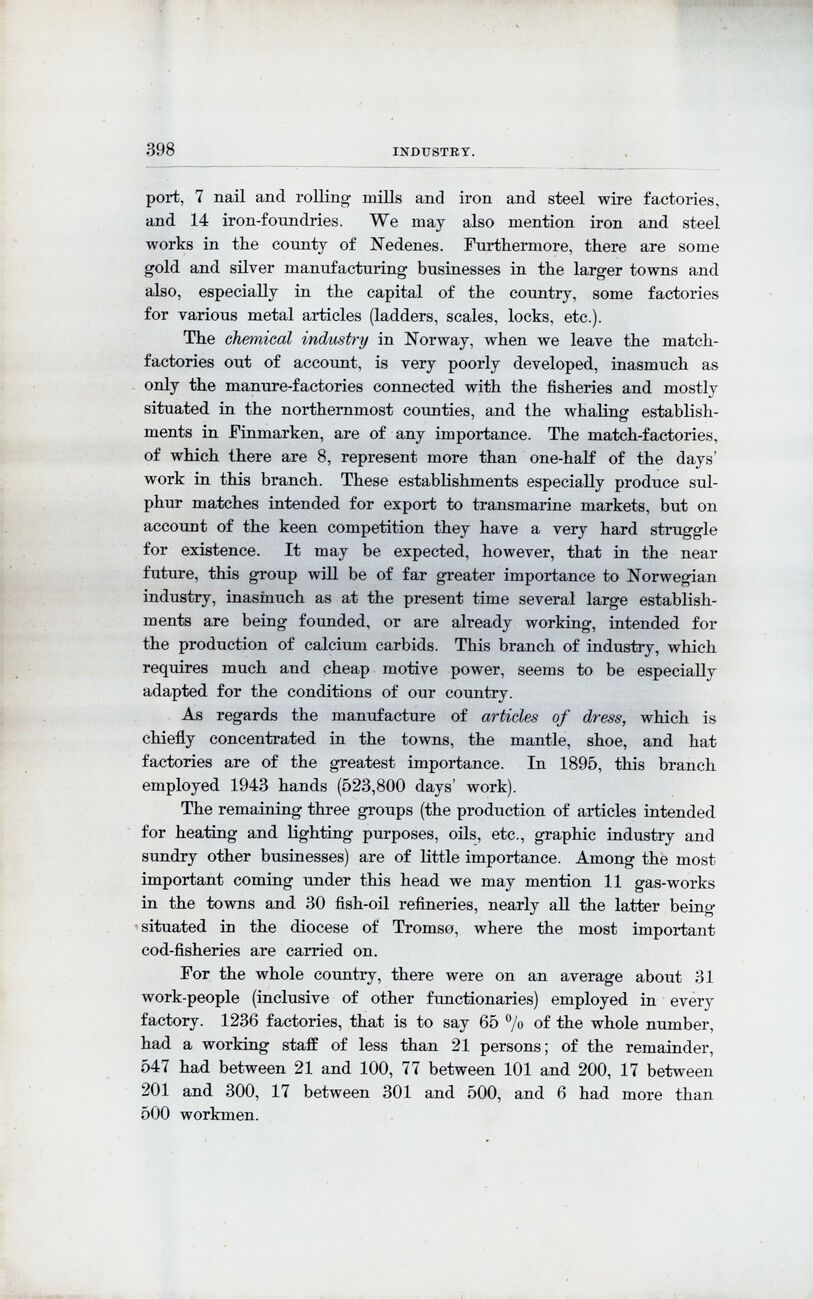
Full resolution (JPEG) - On this page / på denna sida - Industry, by G. Amnéus and A. Th. Klær

<< prev. page << föreg. sida << >> nästa sida >> next page >>
Below is the raw OCR text
from the above scanned image.
Do you see an error? Proofread the page now!
Här nedan syns maskintolkade texten från faksimilbilden ovan.
Ser du något fel? Korrekturläs sidan nu!
This page has been proofread at least once.
(diff)
(history)
Denna sida har korrekturlästs minst en gång.
(skillnad)
(historik)
export, 7 nail and rolling mill» and iron and steel wire factories,
and 14 iron-foundries. We may also mention iron and steel
works in the county of Nedenes. Furthermore, there are some
gold and silver manufacturing businesses in the larger towns and
also, especially in the capital of the country, some factories
for various metal articles (ladders, scales, locks, etc.).
The chemical industry in Norway, when we leave the
match-factories out of account, is very poorly developed, inasmuch as
only the manure-factories connected with the fisheries and mostly
situated in the northernmost counties, and the whaling
establishments in Finmarken, are of any importance. The match-factories,
of which there are 8, represent more than one-half of the days’
work in this branch. These establishments especially produce
sulphur matches intended for export to transmarine markets, but on
account of the keen competition they have a very hard struggle
for existence. It may be expected, however, that in the near
future, this group will be of far greater importance to Norwegian
industry, inasmuch as at the present time several large
establishments are being founded, or are already working, intended for
the production of calcium carbids. This branch of industry, which
requires much and cheap motive power, seems to be especially
adapted for the conditions of our country.
As regards the manufacture of articles of dress, which is
chiefly concentrated in the towns, the mantle, shoe, and hat
factories are of the greatest importance. In 1895, this branch
employed 1943 hands (523,800 days’ work).
The remaining three groups (the production of articles intended
for heating and lighting purposes, oils, etc., graphic industry and
sundry [[** mgl et komma, eller = some?]] other businesses) are of little importance. Among the most
important coming under this head we may mention 11 gas-works
in the towns and 30 fish-oil refineries, nearly all the latter being
situated in the diocese of Tromsø, where the most important
cod-fisheries are carried on.
For the whole country, there were on an average about 31
work-people (inclusive of other functionaries) employed in every
factory. 1236 factories, that is to say 65 % of the whole number,
had a working staff of less than 21 persons; of the remainder,
547 had between 21 and 100, 77 between 101 and 200, 17 between
201 and 300, 17 between 301 and 500, and 6 had more than
500 workmen.
<< prev. page << föreg. sida << >> nästa sida >> next page >>